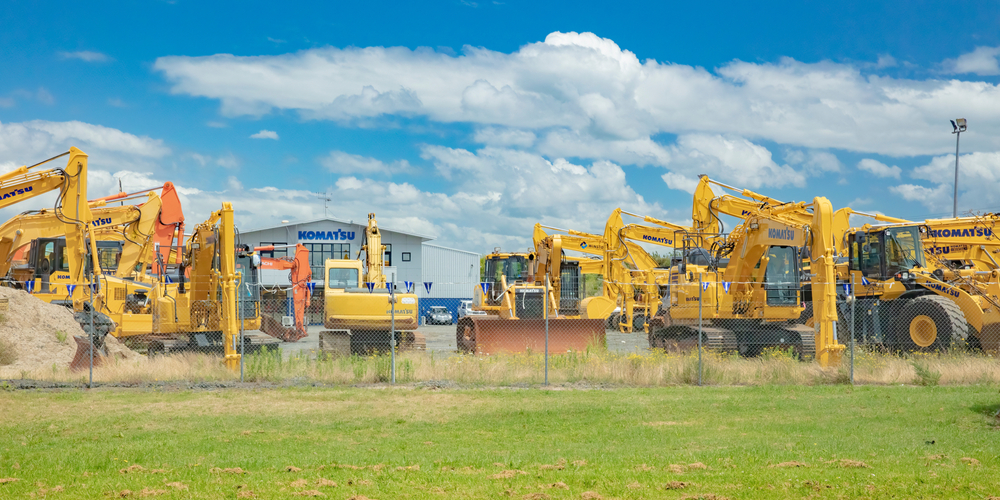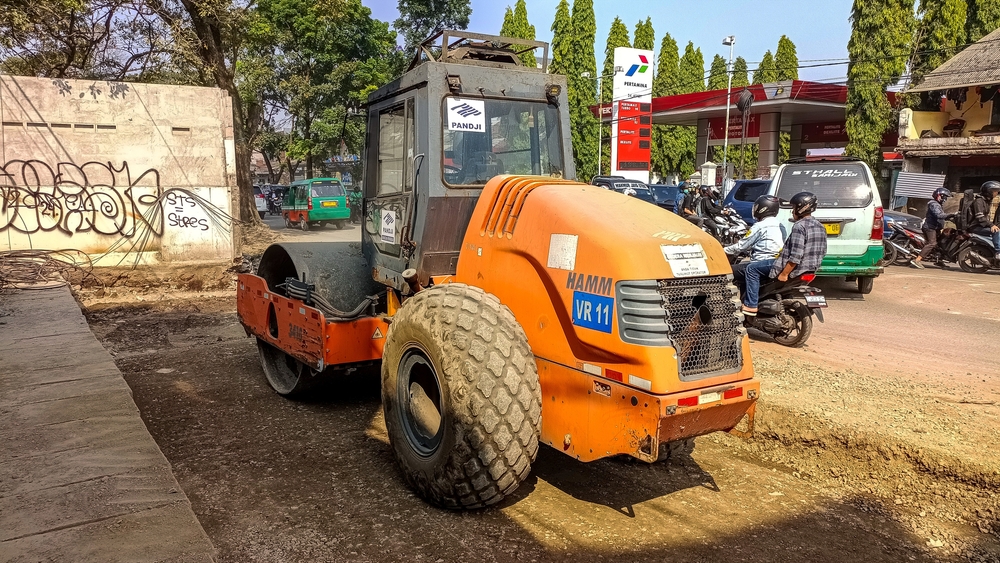Whether it’s building roads, erecting skyscrapers, or laying the groundwork for parks and playgrounds, the importance of compactors cannot be overlooked. These powerful machines, available in various types, ensure that soil, asphalt, and other materials are compressed tightly together, creating a solid and stable base for construction projects. Understanding the different types of compactors and their specific uses is key to achieving the desired durability and stability in construction work. This guide will take you through the world of compactors, highlighting how each type contributes to the success of construction projects by efficiently preparing surfaces for the next stages of development.
Types of Compactors
Vibratory Plate Compactors:
Vibratory plate compactors are essential for compacting granular soils, asphalt, and paving stones. They work by applying both weight and vibrations to the materials beneath them, effectively compacting them to a desired density. These compactors are ideal for smaller projects like sidewalks, patios, and minor road repairs due to their size and maneuverability. Their key features include a flat plate that vibrates to compact materials evenly and efficiently, making them highly effective for creating a stable and flat surface.
Smooth Drum Rollers:
Smooth drum rollers are the go-to equipment for soil and asphalt compaction on larger-scale projects. These rollers come in two main types: single drum for more versatile use, like in road shoulders and tight spaces, and double drum for faster, more uniform compaction of flat surfaces such as roads and parking lots. Their smooth drums are ideal for compacting fine-grained soils and asphalt, providing the necessary force to achieve solid compaction for road construction and other large infrastructure projects.
Padfoot Drum Rollers:
Padfoot drum rollers, with their distinctive protruding lugs or ‘feet’ on the drum, are specifically designed for compacting cohesive and semi-cohesive soils. This design allows them to achieve higher compaction densities than smooth drum rollers, making them essential for projects requiring a strong, stable foundation. The unique drum design of padfoot rollers is especially important for compacting materials that need more manipulation to reach the desired compaction level, such as clay or silt, commonly found in dams, embankments, and road bases.
Pneumatic Rollers:
Pneumatic rollers, characterized by their multiple rubber tires, play a pivotal role in asphalt compaction. Their adjustable tire pressure allows for versatility across different project needs, providing a kneading action that results in more uniform compaction. Pneumatic rollers are particularly effective in sealing asphalt surfaces, making them ideal for road maintenance and airfield construction where a smooth, durable surface is critical for safety and longevity.
Tamping Rammers:
Tamping rammers are designed for compacting materials in confined spaces and trenches, where larger compactors cannot reach. Their compact design and high impact force make them perfect for soil compaction around utility lines, footings, and foundation bases. Tamping rammers are essential for ensuring the ground is properly prepared for utility line installations and other projects requiring precision compaction in tight or restricted areas.
Sheepsfoot Rollers
Sheepsfoot rollers stand out in the world of compactors for their unique design, featuring a drum or roller covered in a grid of round or rectangular protrusions. These protrusions, resembling a sheep’s foot, delve deep into the soil, exerting pressure and compacting the soil beneath them. This design is particularly effective for compacting cohesive soils, such as clay and silt, which require not just pressure but a kneading effect to achieve optimal density.
The key to the sheepsfoot roller’s effectiveness lies in its ability to compact materials from the bottom up, pushing out air and water to create a tightly packed soil layer. This method of compaction is crucial for projects that demand a firm and stable foundation, making sheepsfoot rollers an indispensable tool for heavy-duty compaction tasks. Their use is widespread in the construction of embankments, levees, and in preparing subgrade layers for roads and runways, where the integrity of the soil is paramount.
The unique action of sheepsfoot rollers, combined with their ability to achieve high compaction densities, ensures that cohesive soils are prepared to support the weight and stress of large construction projects. Their specialized design not only maximizes compaction efficiency but also contributes to the long-term durability and stability of the constructed infrastructure.
Factors to Consider When Choosing a Compactor
Project Requirements and Soil Type
The nature of your project and the type of soil at the site are the primary considerations when choosing a compactor. For granular soils, vibratory plate compactors or smooth drum rollers might be the best choice, offering the right balance of force and frequency to achieve optimal compaction. Cohesive soils, on the other hand, benefit from the kneading action of sheepsfoot or padfoot drum rollers, which can more effectively compact the soil by expelling air and moisture. Understanding the soil conditions and the requirements of your project will guide you in selecting a compactor that can achieve the desired results.
Size and Compaction Force
The size of the compactor and the force it exerts are directly related to its effectiveness in compacting soil or asphalt. Larger, heavier machines can compact thicker layers of material in a single pass, making them suitable for big projects with vast areas to cover. Smaller projects, or those in confined spaces, might require a more compact and maneuverable machine that can still deliver the necessary compaction force without the bulk. Matching the compactor’s size and force to the project’s scale and the depth of material to be compacted ensures efficient and effective compaction.
Operational Efficiency and Ease of Use
A compactor’s design can significantly impact its operational efficiency and ease of use. Features like adjustable controls, good maneuverability, and clear visibility from the operator’s seat can make a big difference in how quickly and easily a job gets done. For projects requiring frequent movement of the compactor around the site, models that are easy to transport and set up can save valuable time and reduce labor costs. Consider compactors that offer a blend of performance, comfort, and convenience to enhance productivity and keep your project on schedule.
Maintenance Considerations
Regular maintenance is vital for ensuring that a compactor remains in good working condition and is ready for each job. When choosing a compactor, consider the ease of maintenance and the availability of parts and service. Machines that are straightforward to service, with easily accessible components and robust construction, can minimize downtime for repairs and maintenance. Additionally, choosing a compactor from a manufacturer with a strong support network can provide peace of mind, knowing that expert help and parts are readily available when needed.
Conclusion
Choosing the right compactor is more than just a matter of preference; it’s about matching the equipment to the specific requirements of your project and the soil or material you’ll be working with. The right compactor ensures not only the effectiveness and efficiency of your compaction tasks but also contributes to the overall success and longevity of your construction project. Factors like soil type, project size, operational efficiency, and maintenance considerations play crucial roles in determining the most suitable compactor for your needs.
At ESP, we understand the critical role that compactors play in construction projects, which is why we offer a comprehensive range of compactors designed to meet various construction demands. Whether you’re working on a large-scale infrastructure project or a small residential build, our selection of compactors ensures you have the right equipment to achieve optimal ground preparation and compaction.
We encourage you to explore ESP’s extensive range of compactors, each engineered with precision and durability in mind. Our experts are always available to provide advice and support, helping you select the perfect compactor that aligns with your project’s specific needs.









